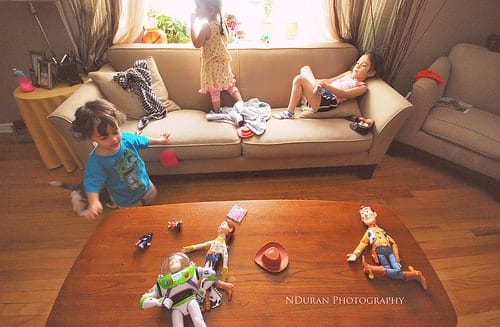 Sensory play is vital for every pre-schooler. Children learn about their world by exploring and experiencing with their senses. Sensory play builds neural pathways enabling cognitive development besides encouraging social interactions.
Sensory play is vital for every pre-schooler. Children learn about their world by exploring and experiencing with their senses. Sensory play builds neural pathways enabling cognitive development besides encouraging social interactions.
A sand and water area as a learning zone is a simple and an effective way to provide them this sensory learning experience. They will learn to touch, scoop, dig and build as they play.
Children tend to be more creative, work in teams and enhance their logical problem solving skills as they try to measure, arrange and build. Setting up a sand and water area can be easy. Ensure that you keep the following points in mind before starting off.
Fit the water and sand station into your preschool’s set-up plan and allocate some special place for it
Before setting up the sand and water area you need to plan it right. It is ideal to find a spot in your outdoor for sand and water station. Outdoor space has two main advantages: easy to cleanup and opportunity to connect with nature.
Don’t worry if you don’t have enough outdoor space, take a good look at your preschool space and check for a corner where this zone would fit in. Make a list of all the items you wish to have in that space and plan the overall size of the zone. This will also depend on the number of children you have in one class and the number of kids who will use the station at a specific point of time.
- Every learning center encourages children to be more social and work as a team. So make the space big enough for them to play in small groups and help each other.
- Place a sink (wash basin) near the sand and water zone. Availability of clean water is mandatory. After play, it makes it easy for children to wash their hands and feet. The staff can fill the water center with clean and fresh water daily.
- The water and the sand used for play must be clean without any contamination. The water must be drained from the table after completion of play. And, the sand needs to checked periodically and refilled. Good sand specifically packaged for learning must be procured.
- Do not place a carpet on the floor, instead find these anti-skid rubber mats that can fill up the zone. There are colourful and child-friendly ones available in the market.

Photo by Mark Hadley 
Pick the right kind of toys and equipment necessary to make it a wonderful learning space
There are many kinds of sand and water tables. You can pick a transparent sand & water table or a mobile center that can be moved according to your needs. Depending on your budget and requirement you can pick a table that will be ideal for your preschool.
Once you’ve chosen a sand and water table for your learning center, you should provide a variety of sand and water play sets and accessories to help enhance children’s learning opportunities.
The water and sand play accessories could include funnels, beakers, pipes, jugs, shovels, sand moulds, magnifying glasses, tongs, sand buckets and more.
You can also easily get some DIY water accessories done at your learning centre that helps you teach basic science concepts. A simple idea would be installing two beakers at different heights and having a straw/pipe connect them. As children pour water in the beaker at the top, the water would run down to the beaker at the bottom showing the simple science behind water flow – from high ground to lower plains.
You can find several DIY ideas for your own water accessories too.
Always have enough floor mats, storage boxes, aprons and hand towels
Of course the sand and water area is going to be messy. So ensure that it is set-up in a child-friendly and easy-to-clean manner.
- Place sensory mats all over the floor. This will avoid slips and falls.
- Buy small waterproof smocks (overalls) or aprons and help prevent any huge mess. Also install a small hand towel or tissue dispenser nearby.
- Do not fill the whole tub. Fill it only up to half or 3/4th full with sand or water. This will help prevent an accidental spill.
- Arrange all the play sets and accessories neatly in a storage. You could also, label these containers and encourage the children to arrange on their own.
The teacher plays an important role during the sand and water activity time
During the sensory sand and water area play time, it is better to monitor every child closely. They could accidentally fall or get hurt. Hence, the teacher must be alert to prevent untoward incidents. The role of a teacher doesn’t end as a watchdog alone as there is so much to learn from water and sand play.
Teacher must facilitate learning by inquiry, asking the right questions and posing easy challenges that improves a child’s conceptual learning. Teachers must engage in a conservation during play, making observations, encouraging children to interact as a child’s curiosity is heightened during water and sand play.
The teacher can even plan to accomplish a learning outcome by setting up the water play to demonstrate a concept and then allowing children to further their exploration. Children understand cause-and-effect as they explore and make observations of their own acts.
Sand and water area also allows children to unleash their creativity as they build sand castles and weave a story around it, enhancing their imaginative ability. They can use sand wheels, diggers, moulds and shovels to create sand art wonders too. Also, in the water tubs they can use small floating toys, fishing poles and water pumps that can kindle their imagination. This will add to the excitement and learning.








